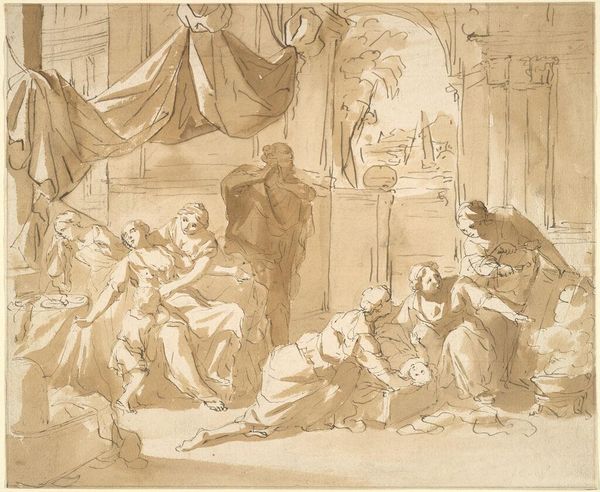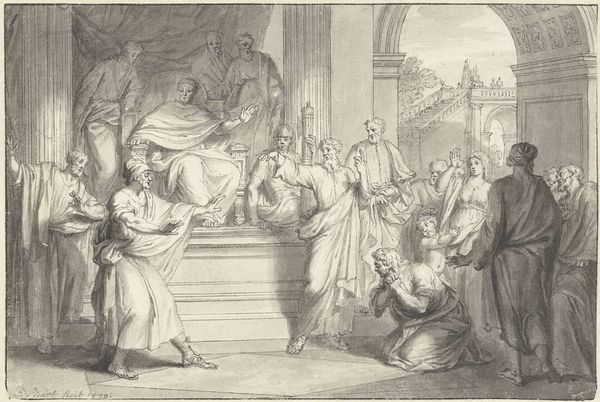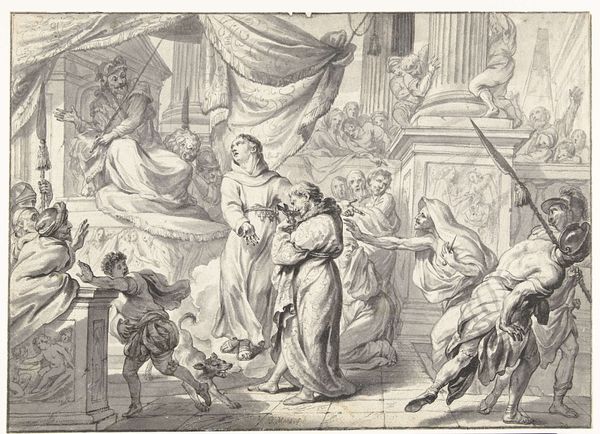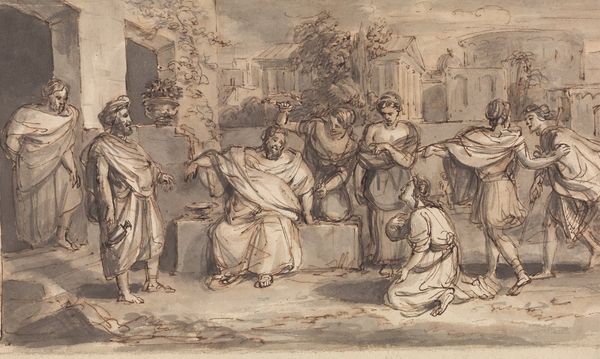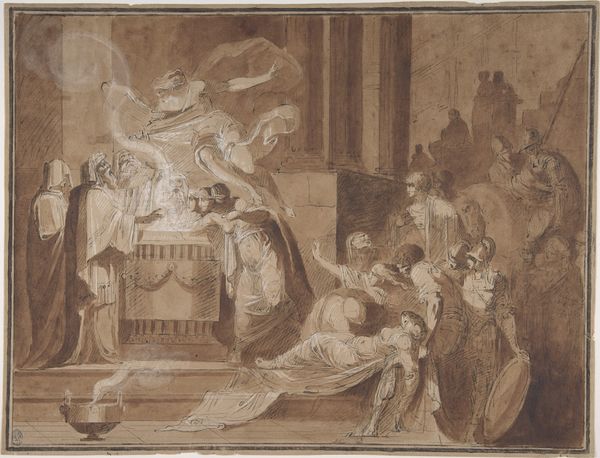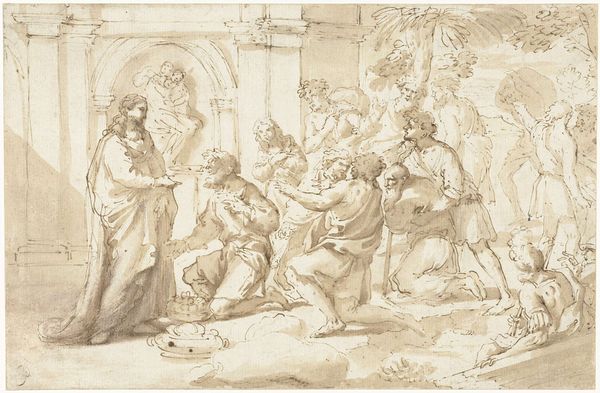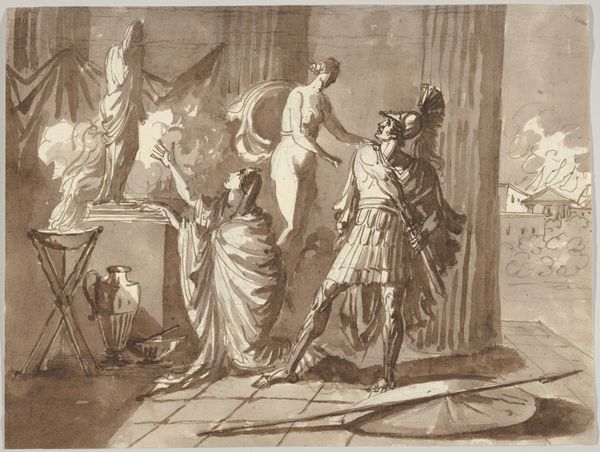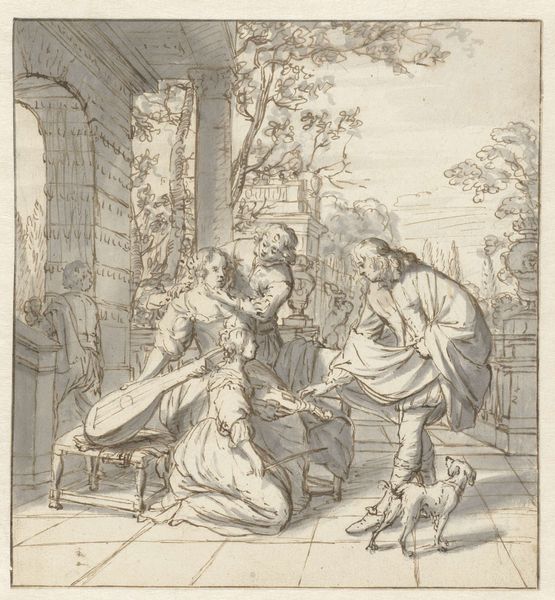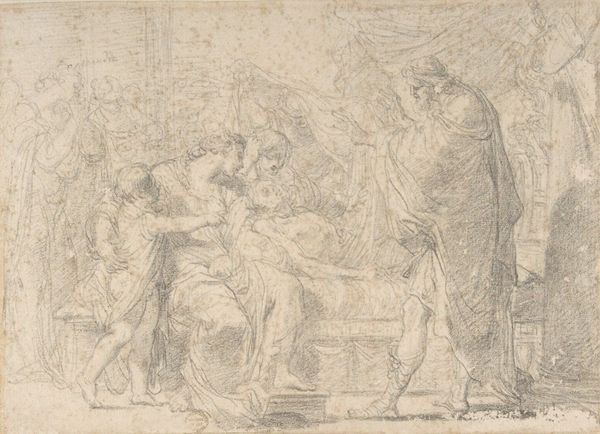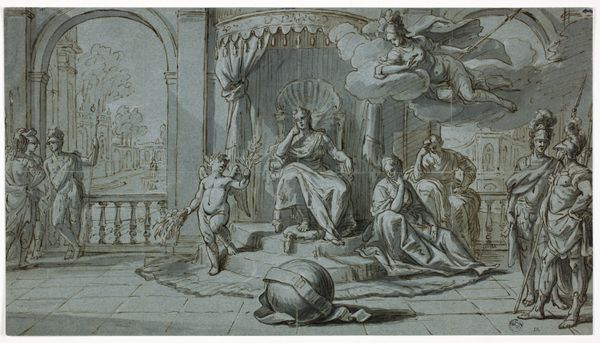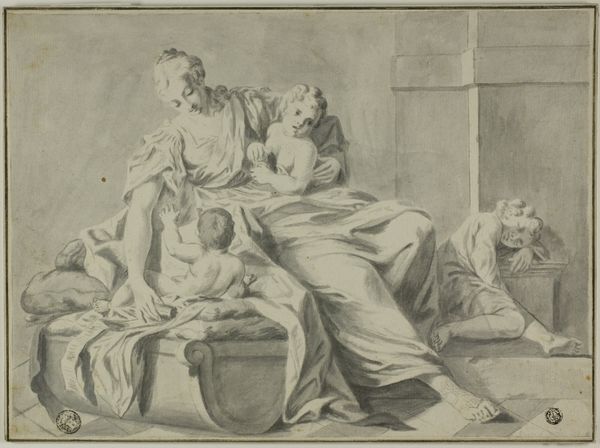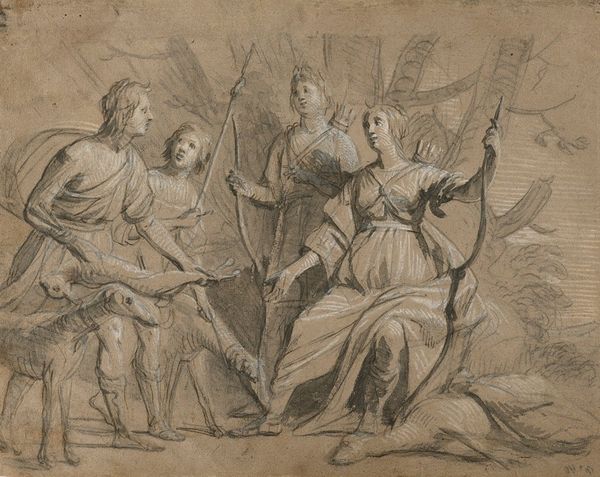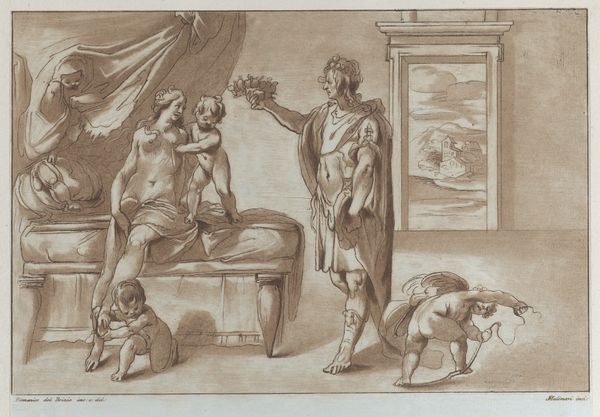
drawing, ink, pen
#
drawing
#
neoclacissism
#
narrative-art
#
landscape
#
classical-realism
#
charcoal drawing
#
figuration
#
ink
#
pen
#
history-painting
Copyright: Public Domain: Artvee
Benjamin West made this ink and wash drawing, 'Hector taking leave of Andromache; the Fright of Astyanax', in 1766. Here, West depicts a scene from Homer’s ‘Iliad’. Hector, a Trojan prince, is saying goodbye to his wife Andromache and their son Astyanax before going into battle, where he will meet his death. Drawn while West was working in Italy, the scene exemplifies the neoclassical interest in classical antiquity. We can see the architecture in the background recalls ancient Greek temples, and the figures are dressed in classical garb. But neoclassical art, with its emphasis on rationality and order, was more than just a revival of ancient styles. It reflected the values of the Enlightenment, an intellectual movement that stressed reason, science, and humanism. The Royal Academy was founded just two years later, in 1768, with West later becoming its president. Understanding this artwork means delving into the artistic and intellectual currents of the 18th century. What was the relationship between art, politics, and society in this period? By consulting historical texts, letters, and other primary sources, we can gain a richer appreciation of West’s artistic vision.
Comments
No comments
Be the first to comment and join the conversation on the ultimate creative platform.
